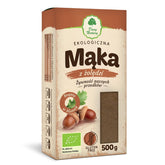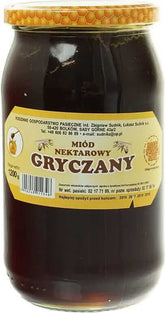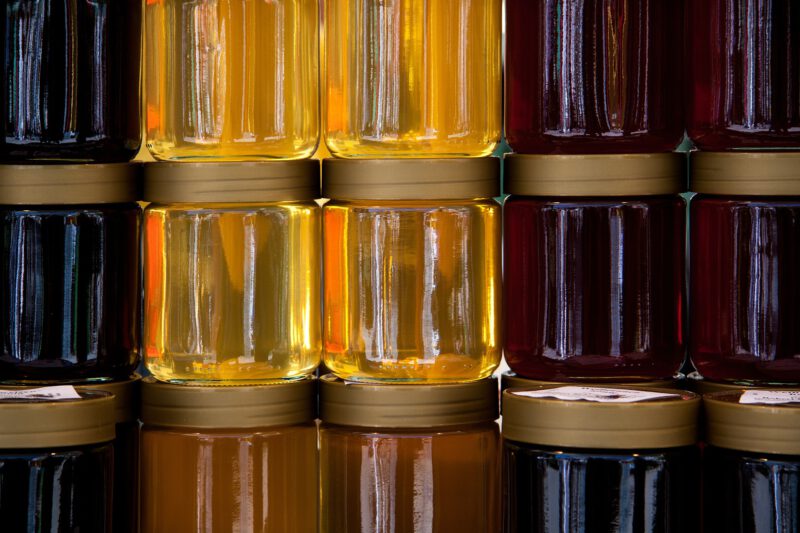Types and properties of individual honeys
CONTENTS
- Distribution of honey according to production method
- Types and properties of honey
- What else is worth knowing about honey?
Natural honey has been considered a natural treasure almost since the dawn of humanity. An interesting fact is that when a cave containing rock paintings was discovered in Valencia in 1919, it turned out that one of them dates back to 10,000–12,000 years ago. The painting depicts a prehistoric man selecting honey from a beehive. The combination of honey's unique taste and its healing and nutritional properties means that interest in honey hasn't waned for hundreds of years, and there's probably no home without at least one jar of this golden delicacy. The most popular honeys in Poland include blossom, linden, acacia, buckwheat, and rapeseed honey. It's worth taking a closer look at the individual varieties and examining their distinctive features.
Distribution of honey according to production method
There are only three types of honey in this department:
- Nectar – probably the most popular that bees make from flower nectar – a very aromatic substance,
- Honeydew – Bees produce it from leaf or needle honeydew, secretions left by aphids, maggots and other organisms on leaves and needles,
- Nectar-honeydew – consists of nectar and honeydew.
Types and properties of honey
Honeys vary in color, aroma, consistency, and taste. Some are so light they are almost creamy white, such as acacia honey, while others, such as buckwheat honey, are brown and almost black. Pine honey takes on a greenish hue. Some are sweeter, milder, almost bland, while others are spicy and have a hint of bitterness. Of course, they are all healthy, with antiseptic and bactericidal properties. Honey has a beneficial effect on our body—heart, brain, nerves, and even slow-healing wounds. Honey provides the body with vitamins A, C, B1, B2, B6, B12, iron, potassium, phosphorus, copper, calcium, magnesium, manganese, biotin, folic acid, and pantothenic acid.
- polyfloral - mild in taste and very sweet, supports the body's immunity, is recommended for asthmatics,
- Linden - tea-colored, sweet, but slightly burning, is irreplaceable in the fight against colds, has expectorant, antipyretic and diaphoretic properties, also has a positive effect on the nervous system, therefore it is recommended for people exposed to high stress,
- Acacia – has an exceptionally sweet and mild taste, a light cream color, has a positive effect on the urinary system and kidney function,
- Buckwheat – has a dark color and a distinctive, burning, and slightly spicy flavor; it is less sweet than acacia or flower honey. It has cleansing and detoxifying properties, strengthens the circulatory system, and is recommended for people with iron deficiency.
- Heather – has a dark brown color and a sharp, slightly bitter taste. It supports the treatment of inflammation of the digestive tract, mouth, or throat. It has a positive effect on the function of the kidneys and urinary system.
- Lavender – has an intense aroma and a slightly bitter aftertaste, although it is quite sweet, lavender honey has, among other things, a beneficial effect on the nervous system, it is also used in cosmetics,
- Raspberry – One of the more difficult-to-obtain honeys, it has a light color, fruity aroma, and a pleasant, delicate flavor. It has antipyretic and diaphoretic properties, making it especially recommended for colds and flu.
- Honeydew honey from coniferous trees – considered one of the healthiest Polish honeys, it is especially recommended for people with weakened immune systems, fatigue, and those suffering from anemia. It has a positive effect on the heart and the entire circulatory system. It has a characteristic, slightly sour aftertaste and is definitely less sweet than nectar honey. It is dark and sometimes takes on a slightly greenish hue.
- Leaf honey – sweeter than conifer honeydew and with a slightly spicy aftertaste, it neutralizes pollutants and has a positive effect on the human skeletal system.
What else is worth knowing about honey?
This is a product with no expiration date. Unlike artificial honey, all natural honey always undergoes a crystallization process. It can be eaten on sandwiches, with cottage cheese, oatmeal, or added to sauces. You can use it to replace sugar in desserts and tea.
There is no better or worse honey – although they differ from one another, all natural honey from Polish apiaries contains valuable nutrients. It is recommended for colds, increased physical and mental exertion, and nervous tension. It is especially recommended for children and the elderly. However, people with bee product allergies and diabetics should handle honey with caution.
THE PUBLISHER'S CHOICE
Dried plums 1 kg BIOGO
- £6.09
- £6.09
- Unit price
- / per
Dried White Mulberries 500 g ORGANIC
- £5.07
- £5.07
- Unit price
- / per
Almonds 1 kg BIOGO
- £10.16
- £10.16
- Unit price
- / per
Cranberries sweetened with apple juice organic 1 kg BIOGO
- £14.22
- £14.22
- Unit price
- / per
Dried dates 1 kg BIOGO
- £3.66
- £3.66
- Unit price
- / per
Unpeeled buckwheat groats 1 kg BIOGO
- £2.44
- £2.44
- Unit price
- / per
Walnuts 800 g BIOGO
- £7.52
- £7.52
- Unit price
- / per
Peeled sunflower seeds 1 kg BIOGO
- £2.64
- £2.64
- Unit price
- / per
PULLED ORGANIC SUNFLOWER SEEDS 1 KG BIOGO
- £3.86
- £3.86
- Unit price
- / per











































































































































